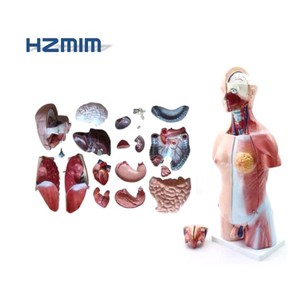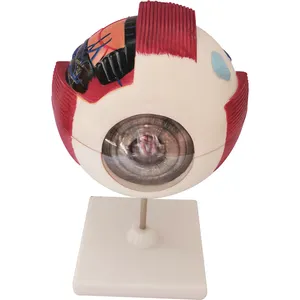(229885 products available)


























































































































































































































Modellism refers to the development of miniature models of real-life objects, which can either be static or dynamic. Static modellism includes the construction of models such as dioramas, architectural models, and other miniature representations of large structures. On the other hand, dynamic modellism entails the building of models that can move such as model trains, boats, and planes. Below are the different types of modellism.
Static modellism
This is the process of developing fixed models that do not move. This type of modelling includes constructing miniature representations of real-life items, including automobiles, planes, ships, buildings, and figures, among many others. The models are usually built using plastic, wood, metal, and other materials. They are often accompanied by kits containing pre-cut or pre-moulded components. Static models are usually used for display purposes, for diorama creation, or for the purpose of collection. The building of static models requires the use of glue, paint, and sometimes tools for modelling. The process involves following instructions, and the assembling of components in a step-by-step manner. This process requires patience, attention to detail and some level of skill.
Dynamic modellism
This involves the development of models that are capable of movement. These models are usually manufactured to replicate real-life vehicles and are often used in the context of railroads, ships, aircraft, and cars, which are commonly referred to as RC model cars. Dynamic modelism also incorporates the use of mechanical components, which include motors, servos, and radio control systems for the models to move or be controlled remotely. The process of building dynamic models is more involved than static modelism since one has to integrate mechanical and electronic components. The builders have to have knowledge of mechanics, electronics, and engineering concepts. This type of modellism is generally rewarding since it leads to the development of working models. These models are capable of replicating the motion and functions of their real-life counterparts.
Diorama modellism
Diorama modellism refers to the construction and creation of three-dimensional, life-like scenes that usually highlight a specific moment in time or a particular theme. These scenes usually contain figures, animals, buildings, vehicles, and other components that are scaled down to fit within the diorama. The components of a diorama are often placed against a painted background. This background may be a photograph or a landscape that is painted onto a flat surface. Diorama modelism is popular among modelers who are interested in history, nature, and art. The builders usually use different tools, materials, and techniques to create realistic textures, lighting, and atmospheres.
Architectural modellism
This type of modellism involves the construction of miniature models of buildings, bridges, and other structures. Architectural models are usually used by architects, engineers, and builders to visualize and communicate their ideas. These models can be made out of foam board, balsa wood, plastic, and metal. They also range in size from small tabletop models to large-scale representations that are built to be used in the field. The process of building architectural models requires precision and attention to detail. This is because one has to accurately represent the dimensions, forms, and components of the real-life structures.
Designing a model involves several key steps that help bring an idea or concept to life, whether it's for architectural, engineering, or product design purposes. Here's a breakdown of the essential elements in the design process:
Conceptualization
Conceptualization is the initial stage where the idea for the model is developed. This involves identifying the purpose of the model and the key concepts it needs to represent. It could be an architectural building, a mechanical device, or a product. During this stage, sketches and simple diagrams are often created to visualize the basic structure and components of the model.
Detailed Design
Detailed design involves creating a more comprehensive and precise representation of the model. This includes specifying dimensions, materials, and components. For architectural models, this might involve floor plans, elevations, and sections. In product design, it could include specifications for each part of the product, including materials, tolerances, and assembly methods.
Scale and Proportion
One of the critical aspects of model design is determining the appropriate scale and proportion. The scale represents the ratio between the model and the actual object. For example, a 1:100 scale means that 1 unit on the model represents 100 units in reality. Proportion ensures that the relationships between different parts of the model are accurate. This is crucial for maintaining the model's realism and functionality.
Materials Selection
Choosing the right materials is vital in model design. The materials affect the model's appearance, durability, and cost. Common materials for architectural models include cardboard, plastic, wood, and foam. In mechanical models, metals, plastics, and composites are often used. Each material has its properties and suitability depending on the model's purpose and requirements.
Construction Techniques
Construction techniques refer to the methods used to build the model. This can range from manual assembly using tools and adhesives to automated techniques like 3D printing and CNC machining. Each technique has its advantages and impacts the model's precision, complexity, and cost. Manual assembly allows for greater detail and customization, while automated methods offer speed and consistency.
Testing and Iteration
Testing and iteration are critical for refining the model. This involves evaluating the model against its intended purpose and making adjustments as needed. For architectural models, this might include assessing the spatial relationships and functionality. In product design, testing can involve checking the model's mechanics and usability. Feedback from stakeholders can also inform changes to improve the model.
Presentation and Documentation
Presentation and documentation are the final steps in the model design process. This involves preparing the model for presentation to stakeholders, which may include creating visual aids, reports, and documentation that explain the model's design choices, materials, and construction process. Effective presentation helps communicate the model's features and benefits, facilitating decision-making and feedback.
Wearing model-building involves attention to detail, precision, and creativity. These are the key aspects one should consider when engaging in this hobby. Enthusiasts should start by gathering the required tools and materials. For instance, these include the model kit, cutting tools, adhesives, and paint. Also, users should read the instructions carefully to understand the assembly process. Normally, complex steps should be broken down into manageable parts. This helps ensure a smooth workflow. Further, users should use cutting tools to carefully detach parts from their sprues. This prevents damage to the delicate components.
Assembling the model requires patience and precision. Therefore, users should follow the instructions sequentially. This ensures each part fits correctly. Also, users should apply adhesive sparingly. This prevents excess glue from seeping onto visible surfaces. More importantly, they should allow each section to dry before moving on to the next. This ensures a stable structure. Also, it helps users avoid reworking dried adhesives. Additionally, painting the model enhances its realism. Therefore, users should choose high-quality paints that adhere well to plastic or metal surfaces. They should use a brush or airbrush for even application. This minimizes streaks and uneven coats. It is important to paint in layers. This gradually builds depth and detail. It also allows each layer to dry before applying the next.
Matching a model kit requires careful consideration of various factors to achieve a successful and visually appealing result. Users should start by selecting a model kit that aligns with their interests and skill levels. This includes determining whether they prefer aircraft, vehicles, ships, or figures. These are among the categories available. Therefore, they should look for kits that offer a balance between complexity and their experience. This ensures a rewarding building experience. Additionally, they should consider the scale of the model. This influences the level of detail and size of the finished product. For instance, 1/72 scale aircraft are smaller and simpler than 1/48 scale. Hence, they require more intricate detailing.
When matching components and details, users should pay attention to the kit's instructions and reference materials. Usually, these include photographs and historical documentation of the real-life counterpart. Also, they should follow the assembly sequence provided in the instructions. This ensures a logical and efficient building process. Moreover, they should use the right tools and adhesives recommended for the specific materials used in the kit. For example, plastic models often require plastic cement or super glue. However, metal models may need epoxy adhesives. In addition, they should use precision cutting tools to separate parts from the sprue. This minimizes damage and ensures clean edges. Also, they should take their time to assemble components carefully. This ensures proper alignment and avoids unnecessary adjustments later.
Q1: What are the essential tools and supplies needed to start a model-building hobby?
A1: To start a model-building hobby, one needs essential tools like hobby knives for precise cutting, tweezers for handling small parts, and paintbrushes for detailing. Supplies include adhesives like plastic cement or super glue, paints for finishing, and various gauges for measuring. A cutting mat and a storage box for parts can also be very helpful.
Q2: How does one choose the right model kit for their skill level?
A2: Beginners should look for models with fewer parts and simpler assembly instructions, often labeled as "easy" or "beginner" kits. Intermediate builders can choose more complex models that offer more detail and a larger number of parts. Advanced modelers should look for intricate kits that challenge their skills and provide a more rewarding experience.
Q3: What are some common mistakes to avoid in model building?
A3: Common mistakes include rushing the assembly, which can lead to misaligned parts, or not reading instructions thoroughly. Another mistake is using too much adhesive, which can cause damage or create a messy finish. It's also important to let each layer of paint or glue dry completely before proceeding with the next step.
Q4: How can one improve their painting and detailing skills in model building?
A4: Improving painting skills involves practicing with different brushes and techniques, such as airbrushing or dry brushing. Detailing skills can be enhanced by using finer brushes for small parts and applying washes or pigments to bring out textures. Watching tutorials and seeking advice from experienced modelers can also provide valuable tips and techniques.
Q5: What are some resources for finding tips and techniques for model building?
A5: Resources for model-building tips include online forums and communities where hobbyists share their experiences and techniques. YouTube channels dedicated to modeling often provide step-by-step tutorials. Magazines and books focused on modeling can offer in-depth articles and guidance. Additionally, manufacturer websites often provide tips and updates related to their model kits.